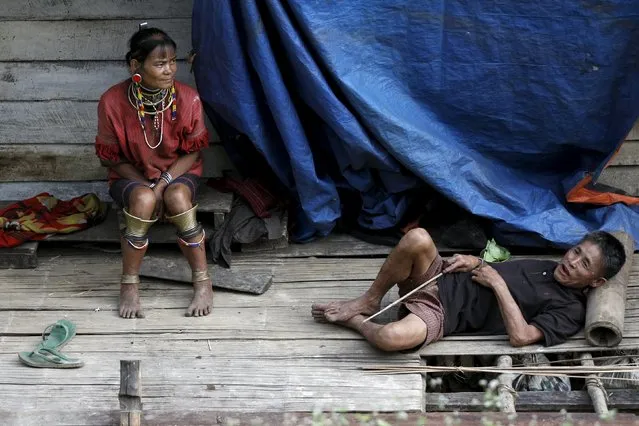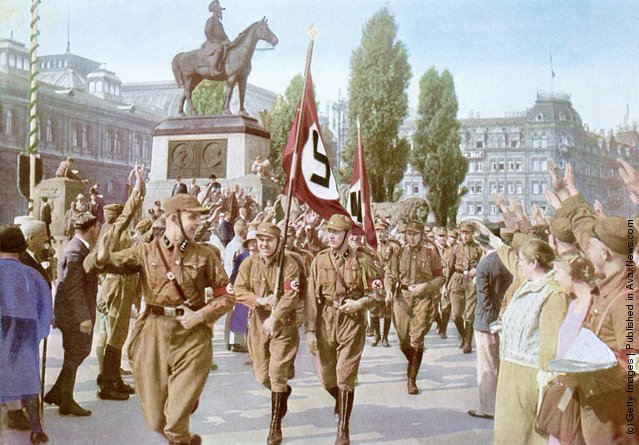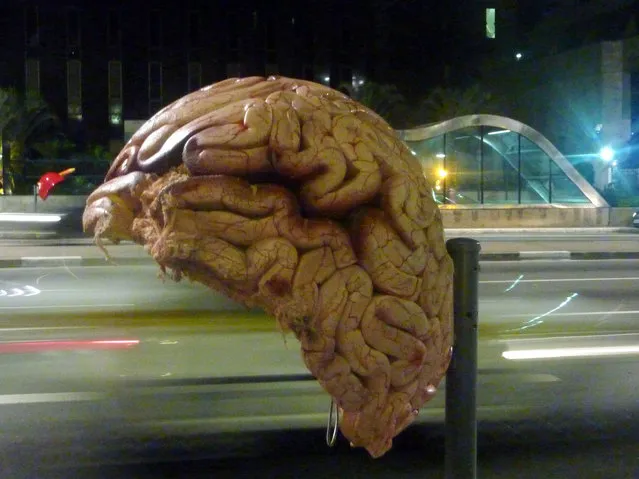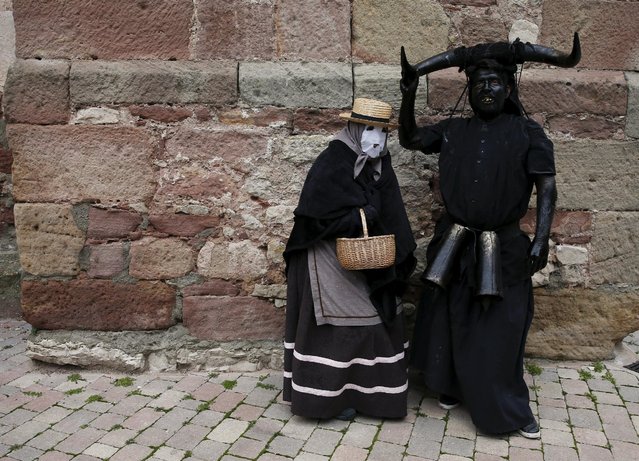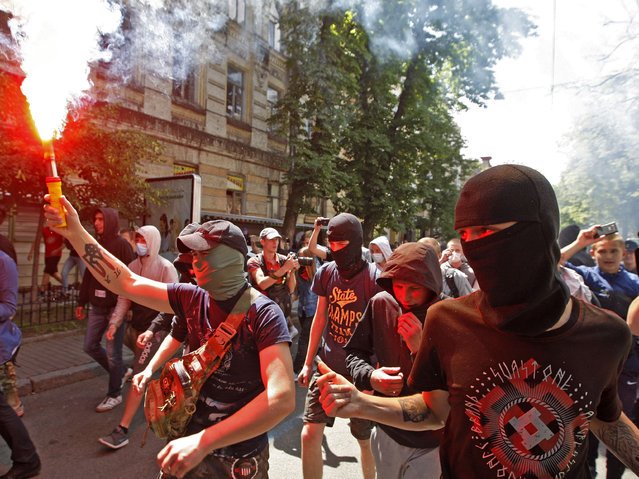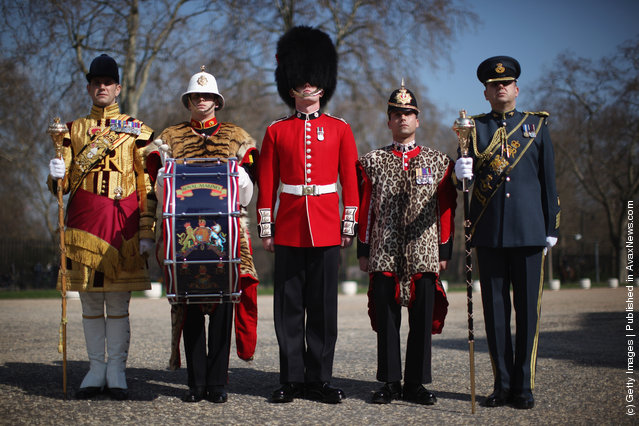
(L-R) Senior Drum Major Betts of the Scotts Guard, Bugler Lee Kidd, Guardsman Adam Deer of the Coldstream Guards and Lance corporal Michael Strong of the Princess of Wales's Royal Regiment pose in their full ceremonial attire at Wellington Barracks on March 21, 2012 in London, England. The group make up part of the ceremonial military personnel who will play a key role during Her Majesty the Queens Diamond Jubilee celebrations between June 2–5. (Photo by Dan Kitwood/Getty Images)
23 Mar 2012 11:50:00,post received
0 comments

